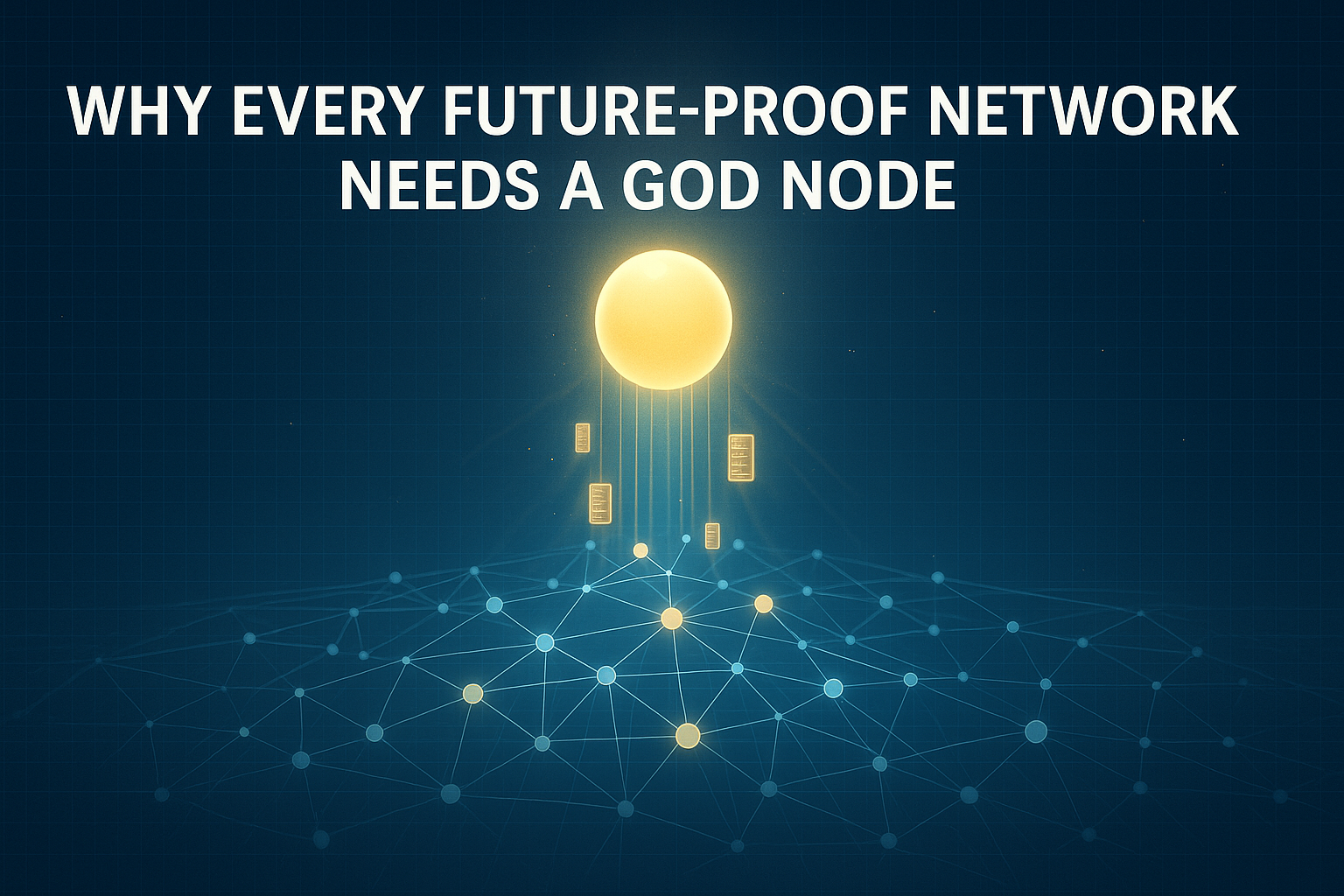Why Every Future‑Proof Network Needs a “God Node”
Patch‑after‑patch security is like playing whack‑a‑mole on a cosmic timescale. What if we engineered networks so that any short‑term advantage obtained by secrecy is guaranteed to backfire in the long run? Enter the God Node.

Designing systems that make cheating not just wrong, but pointless.
1. The Trust Crisis in Modern Networks
From smart‑contract exploits to supply‑chain hacks, the common thread is information asymmetry: someone knows something the rest of us don’t—until it’s too late. Patch‑after‑patch security is like playing whack‑a‑mole on a cosmic timescale. What if we engineered networks so that any short‑term advantage obtained by secrecy is guaranteed to backfire in the long run?
Enter the God Node.
2. What Is a God Node?
| Property | Description |
|---|---|
| Omniscience | Has global, ground‑truth visibility of every state transition in the network. |
| Delayed Accessibility | Peers can query its record only after a finite (but not necessarily short) lag Δ. |
| Immutable Memory | Its disclosures are tamper‑proof and cryptographically verifiable. |
Think of it as a post‑mortem oracle: it may not stop you in the act, but it will expose you afterwards—publicly and irrevocably.
3. Why a God Node Alters the Game
In an infinite‑horizon setting, the mere knowledge that every move will be unveiled eliminates rational incentives to defect.
- One‑shot gain g from cheating vs. discounted long‑term loss β^Δ·C/(1−β).
- For patient actors (β≈1), any g is eventually dominated by the reputational and economic fallout.
Bottom line: cooperation becomes the strictly dominant strategy, not because we are saints, but because physics (or cryptography) makes betrayal irrational.
4. Real‑World Approximations of God Nodes
- Public Blockchains – Immutable ledgers with probabilistic finality (Δ ≈ minutes).
- Tamper‑Evident Logs – Merkle‑tree event sourcing inside cloud services (Δ ≈ hours).
- Cross‑Signed Transparency Trees – Certificate Transparency, Key Transparency (Δ ≈ days).
- Open‑source Firmware + Build Reproducibility – Every commit is future‑auditable (Δ ≈ release cycle).
Different lags, same promise: eventual universal disclosure.
5. Design Guidelines for God‑Node‑Ready Networks
- Make the Log First‑Class – Treat the audit trail as core state, not an afterthought.
- Cryptographic Commitments Everywhere – Hash chains, digital signatures, Byzantine‑fault‑tolerant quorum certs.
- Redundant Observers – Plurality of auditors prevents a single‑point corruption of the oracle.
- Clear Economic Stakes – Slashing, fines, or public shaming that outweigh short‑term profit.
- Accessible APIs for Retrospection – If users can’t easily prove misbehaviour, the threat loses teeth.
6. Limitations & Open Questions
- Privacy vs. Transparency – How to hide today without hiding forever (zero‑knowledge proofs, selective disclosure)?
- Lag Abuse – Attackers may still profit within Δ. Can we shrink Δ without centralising power?
- Corrupt‑or‑Crash Oracles – What happens if the auditors themselves collude? Think multi‑God sharding.
7. God Nodes & Temporal‑NP
Humans—designers standing outside the system timeline—solve problems that in‑network agents cannot (e.g., proving consensus safety). By encoding the solution into a God‑Node‑backed protocol, we hand deterministic machinery a shortcut around undecidable coordination problems. Your network inherits the designer’s foresight.
8. Call to Action
If your protocol assumes honest behaviour, give it a God Node.
- Audit logs are cheap; reputation collapses are not.
- Designing for infinite games means engineering away profitable defection vectors.
- The future will belong to systems where transparency is physically or cryptographically inevitable.
Build like every secret will be headline news tomorrow—because, with a God Node, it will be.
